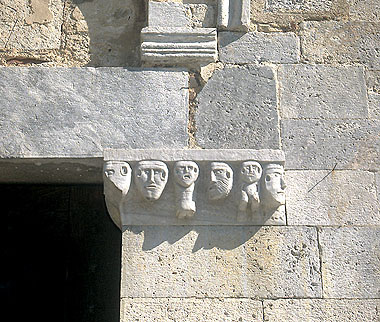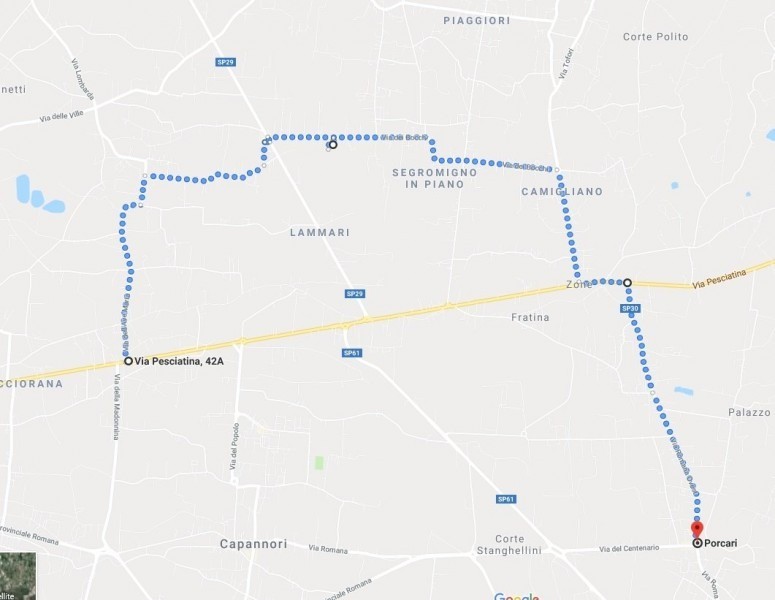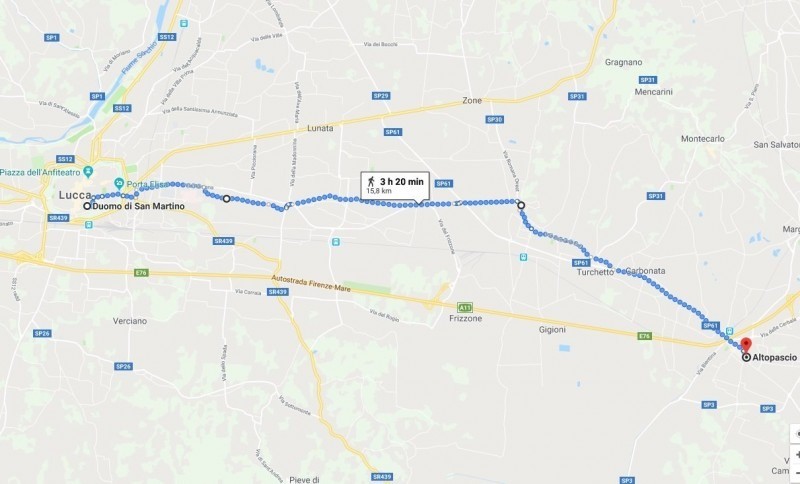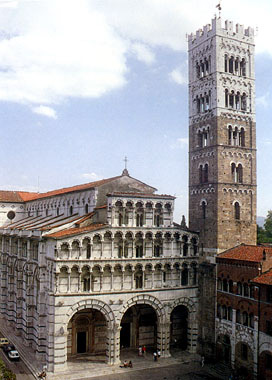The Via Francigena from Lucca to Versilia

In the Middle Ages the Via Francigena was the main route for pilgrims heading for Rome, the Holy See; it also became an extremely important channel of cultural exchange and trade. Together with the penitent pilgrims also merchants bound for the trade fairs in northern Europe began to travel along the Via Francigena: this intensive use of the road led to the construction of a series of hospices, villages, monasteries and castles along its course; today they represent good examples of Romanesque architecture, often well preserved and enhanced by the beauty of the landscape.
Lucca owed great part of its wealth to the trade along the Via Francigena. Coming from the plain the town could be easily reached along one of two parallel roads, the "via de supra" and the "via de subtus"; in ancient times the former went through the village of "Feliciaio", while the latter crossed the Lombard settlement of Tempagnano.
The famous wooden crucifix known as Volto Santo, work of Nicodemos as the legend goes, a sculpture with reliquary kept in the cathedral of San Martino, was the first thing the pilgrims bound for Lucca went to see. Inside the town a number of Hospitals attached to the main churches provided shelter and food for the pilgrims.
In Montemagno, seat of the ancient Hospital of San Michele, you can see also the remains of a XIth century castle. In the nearby village of Pieve a Elici is the church of San Pantaleone as well as a medieval castle, while Rotaio, a village with many archaeological remains and ancient bridges, has a castle surrounded by walls that describe a triangle. After Camaiore you reach Valdicastello, renowned for its ancient church of SS. Giovanni and Felicita with a rich Romanesque decoration. Entering Pietrasanta you will notice the Town Hospital where the nunnery of San Salvatore once stood; in the centre of the town the early XIVth century Duomo (or Collegiata di San Martino) is worth a visit together with the church of Sant'Agostino, next door to the Augustinian convent of SS. Anunziata, the baptistery of San Giacinto and the church of Sant'Antonio.
Lucca owed great part of its wealth to the trade along the Via Francigena. Coming from the plain the town could be easily reached along one of two parallel roads, the "via de supra" and the "via de subtus"; in ancient times the former went through the village of "Feliciaio", while the latter crossed the Lombard settlement of Tempagnano.
The famous wooden crucifix known as Volto Santo, work of Nicodemos as the legend goes, a sculpture with reliquary kept in the cathedral of San Martino, was the first thing the pilgrims bound for Lucca went to see. Inside the town a number of Hospitals attached to the main churches provided shelter and food for the pilgrims.
In Montemagno, seat of the ancient Hospital of San Michele, you can see also the remains of a XIth century castle. In the nearby village of Pieve a Elici is the church of San Pantaleone as well as a medieval castle, while Rotaio, a village with many archaeological remains and ancient bridges, has a castle surrounded by walls that describe a triangle. After Camaiore you reach Valdicastello, renowned for its ancient church of SS. Giovanni and Felicita with a rich Romanesque decoration. Entering Pietrasanta you will notice the Town Hospital where the nunnery of San Salvatore once stood; in the centre of the town the early XIVth century Duomo (or Collegiata di San Martino) is worth a visit together with the church of Sant'Agostino, next door to the Augustinian convent of SS. Anunziata, the baptistery of San Giacinto and the church of Sant'Antonio.
- Gruppo archeologico di Camaiore (a cura di), La Via Francigena nel territorio di Camaiore, Massarosa 1995
- STOPANI R., La via Francigena: una strada europea nell'Italia del Medioevo, Firenze, 1992
Scopri altre attrazioni vicino a The Via Francigena from Lucca to Versilia
See allYou may also like..
See allFind more
0







 On foot
On foot











